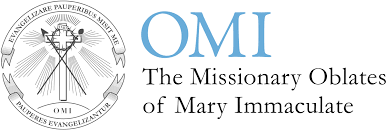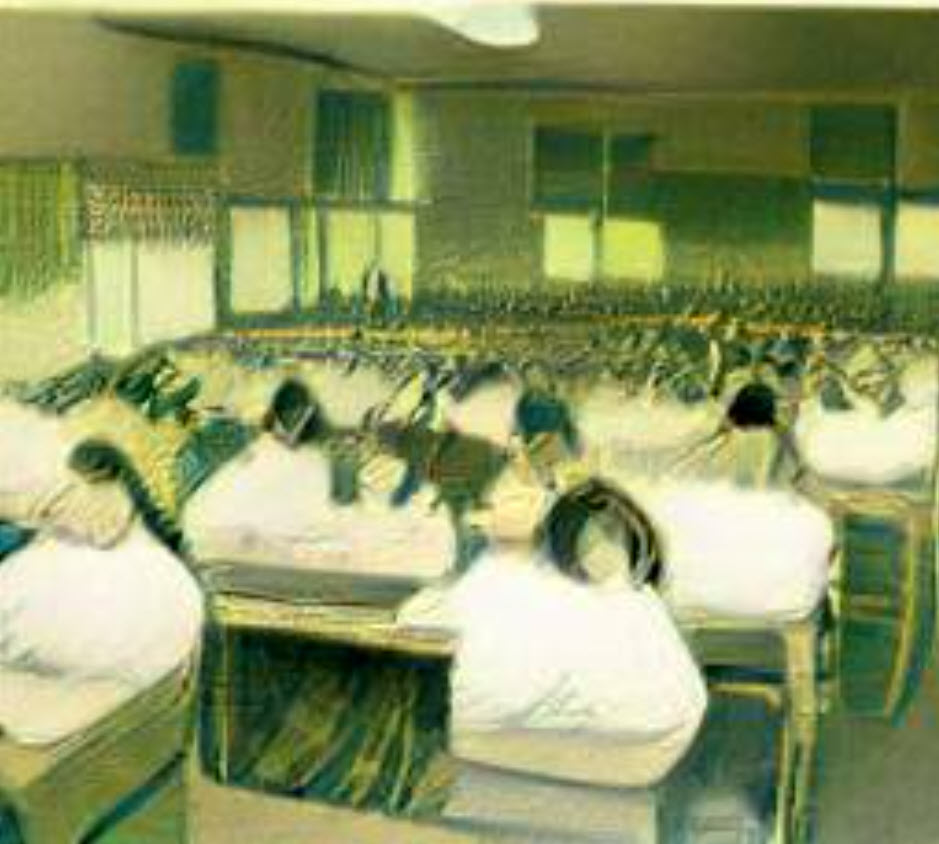Category: truth and reconciliation
-
“Canada’s war against Indigenous People was through law”
Modified:
“After Confederation, the government of Canada waged war – just like the Americans did. Americans did it through military might – the Indian Wars during Lincoln’s era and afterwards were a big part of American history. But Canada’s war against Indigenous People was through law. We waged war through law. Imagine being subjected to that.…
-
TRCC’s primary legal sources
Modified:
On this page TRCC and the law Primary legal sources See also Licence TRCC and the law The TRCC’s Final Report cites numerous legal sources (legislation, legal decisons, court documents, etc.) to support its findings and recommendations. The discussion revolves around three major themes relating to justice: The failures of the criminal justice system in…
-
1_Primary legal sources in the TRCC’s Final Report
Modified:
On this page Background Primary legal sources Canadian legal decisions Next Licence Background Two chapters of the Truth and Reconciliation Commission of Canada (TRCC)’s Final Report describe the history of Survivors of Indian Residential Schools seeking justice in Canadian courts: “Abuse: 1940-2000,” Chaper 41, Volume 1, Part 2, pp. 399-451. “Getting to the Settlement Agreement,”…
-
Statistical Analysis of Deaths in Indian Residential Schools
Modified:
On this page Announcement Background Data recovery Final dataset Next Licence Announcement In confronting recent efforts to minimize the history and legacy of Indian Residential Schools, I had occasion to revisit Volume 4: “Missing Children and Unmarked Burials” of the Final Report of the Truth and Reconciliation Commission of Canada (TRCC). With the assistance of…
-
Intergenerational trauma and the legacy of Indian Residential Schools
Modified:
“These days it might be said that I’ve never really accepted that I’ve been deeply scarred by it.” LOL On March 1, 2025, I attended a conversation between Sir Nigel Biggar and Dr. Margaret MacMillan about the history and morality of colonialism, at an event in Toronto hosted by the Canadian Institute for Historical Education…
-
ISC/CIRNAC’s Administration of Canada’s Access to Information Act
Modified:
On this page Introduction Legislation and regulation Policies and procedures Internal audit External oversight Monthly summaries and annual reports Next Licence Introduction In August 2017, the Prime Minister announced the dissolution of Indigenous and Northern Affairs Canada and the establishment of two new departments – Indigenous Services Canada (ISC) and Crown-Indigenous Relations and Northern Affairs…
-
Framework for Evaluating ISC/CIRNAC’s Response to ATI requests
Modified:
On this page Introduction Accessing statistical data Proposing an evaluation framework Planning the evaluation Conclusion Licence Introduction Access to information under the control of Indigenous Services Canada (ISC) and Crown-Indigenous Relations and Northern Affairs Canada (CIRNAC) and its predecessors – Indian and Northern Affairs Canada (INAC) and Aboriginal Affairs and Northern Development Canada (AANDC) –…
-
Protected: Media Coverage of the Statue of J. A. Macdonald “Holding Court” in Prince Edward County, 2015-2022
Modified:
There is no excerpt because this is a protected post.
-
EFFICIENCY of ISC/CIRNAC’s Access to Information Programs
Modified:
On this page Introduction EFFICIENCY Background Data sources Average direct costs per closed request Average direct costs per page processed for closed requests Conclusion Licence Introduction Access to information under the control of Indigenous Services Canada (ISC) and Crown-Indigenous Relations and Northern Affairs Canada (CIRNAC) and its predecessors – Indian and Northern Affairs Canada (INAC)…
-
ISC/CIRNAC’s lack of transparency in processing sensitive or high-profile ATI requests
Modified:
On this page Introduction Complexity and sensitivity Directives and instructions Conclusion Licence Introduction In a series of posts, we aim to support efforts of the Special Interlocutor and others to understand and overcome barriers to access to information pertaining to the history and legacy of relations between First Nations and Canada. First we describe the…
-
Narratives for four Indian Residential Schools come to light
Modified:
[Update: https://www.cbc.ca/news/indigenous/catholic-orders-residential-school-records-1.4686472] Last year the federal government indicated that no school narratives had been created for four Indian Residential Schools and, therefore, that the government would not be providing them to the National Centre for Truth and Reconciliation (NCTR) under the terms of a landmark Memorandum of Understanding and Agreement that was negotiated in the…
-
Identifying Authority Records that relate to the Oblates
Modified:
Background Our start on OBLATES-LOD has focused on extracting data from two of AtoM’s main entity types underlying the NCTR’s online archive: Authority records Archival descriptions Here we complete three tasks: Extracting data from 89 Authority Records relate to the Oblates. Collecting HTML and XML versions of the Archival Descriptions of resources that relate to these Authority…
-
Oblates’ Indian Residential Schools in Canada
Modified:
What’s here Background TRC’s list of Indian Residential Schools Our list of Oblates’ Indian Residential Schools Next steps Background A year ago, I set out to build an authoratative graph of Indian Residential Schools (IRS) in Canada – beginning with identifying their names, locations, religious affiliations, and dates of operation. As the demands of this…
-
Matching Canada’s lists to OIRS
Published:
—
Modified:
What’s here Background Indian Residential Schools Settlement Agreement Canada’s initial list of Indian Residential Schools Canada’s final list of Indian Residential Schools Recap Next steps Background Our initial dataset of Oblates’ Indian Residential Schools (oirs_2022-12-17-1) contains basic identifying information derived mainly from the Truth and Reconciliation Commission (TRC). We want to anchor and enrich this dataset…
-
Integrating NCTR geodata into the OIRS_2022-12-19-1
Modified:
What’s here Background Geodata National Centre for Truth and Reconciliation x Recap Next steps Background So far our datasets provide only basic information (town/city, province/territory) about the location of Oblates’ Indian Residential Schools. We now want to draw upon two sources for more precise geolocation data. National Centre for Truth and Reconciliation One part of…
-
Indian Residential Schools at Kamsack/Fort Pelly and Cross Lake
Modified:
The Truth and Reconciliation Commission noted that “The Indian Residential Schools Settlement Agreement (IRSSA) provides the most comprehensive listing of Canadian residential schools for Aboriginal people. At the time of approval, the Settlement Agreement listed 130 residential schools and residences. The Settlement Agreement also outlined a process by which additional schools could be added to…
-
Starting on OBLATES-LOD
Modified:
I’ve recently posted about the challenge of establishing basic facts about Indian Residential Schools (IRS) in Canada, e.g. How many were there? What were their names? When were they open? Who attended them? I’m convinced that Linked Open Data (LOD) and semantic web technologies will help us overcome this challenge. OBLATES-LOD applies these technologies to…
-

Oblates’ management of Indian Residential Schools
Modified:
Update – November 3, 2022 We have now identified 62 Indian Residential Schools once managed by the Oblates of Mary Immaculate (Oblates). In August 2022, we relied upon “School Narratives” prepared by the Canadian government to identify 57 Indian Residential Schools once managed by the Oblates. We have recently confirmed the Oblates’ management of 3…
-

Unmarked graves, undisclosed records – Update July 21, 2022
Modified:
Update On July 18, 2022, Crown Indigenous Relations and Northern Affairs Canada provided me with a copy of the Memorandum of Agreement on Document Sharing between the National Centre for Truth and Reconciliation and Crown Indigenous Relations (January 20, 2022). I have updated this post accordingly. Public statements “The federal government has turned over all…
-
Links to federal government summaries and narratives of Canada’s Indian Residential Schools
Modified:
Introduction To assist researchers, we have integrated our identification of Indian Residential Schools that operated in Canada with our account of the federal government’s sporadic release of relevant documents. The Table includes entries for 155 Indian Residential Schools as listed by the Truth and Reconcilation Commission (Final Report, Volume IV: Missing children and unmarked graves,…
-
Unmarked graves, undisclosed records
Modified:
“The federal government has turned over all of the records we have for residential schools to the National Centre for Truth and Reconciliation in Winnipeg.” Prime Minister Justin Trudeau, October 18, 2021 “Unfortunately, this is not accurate.” National Centre for Truth and Reconciliation (NCTR), October 19, 2021 “I have therefore directed my Department to take all…
-
Identifying Canada’s Indian Residential Schools
Modified:
Identifying Canada’s Indian Residential Schools was challenging for the Truth and Reconciliation Commission (TRC) and remains challenging for us today. The TRC recognized that the “Indian Residential Schools Settlement Agreement (IRSSA) provides the most comprehensive listing of Canadian residential schools for Aboriginal people,” but also observed that “issues combine to complicate any attempt to list…
-
Canada’s Indian Residential Schools under the original IRSSA
Modified:
By our reckoning, the original Indian Residential Schools Settlement Agreement (IRSSA) identified 131 Indian Residential Schools: Schedule E (Residential Schools) identified 107 Indian Residential Schools Schedule F (Additional Residential Schools) identified 24 Indian Residential Schools. We are publishing these 131 institutions, as they appeared in the original IRSSA, as a machine-readable, Tab-Separated-Value file, with these…
-
Applications and Canada’s decisions under Article 12 (March 28, 2013)
Modified:
We have seen that Canada issued periodic updates of its decisions regarding applications to add institutions to the Indian Residential Schools Settlement Agreement (IRSSA) under Article 12. We are publishing data about 1,502 institutions from the last available update (March 28, 2013), as a machine-readable, Tab-Separated-Value file, with these data fields: Field Definition PREFERRED_NAME Preferred…
-
Analysis of Applications and Canada’s Decisions under Article 12 – 20130328 Update
Modified:
We have seen that Canada issued periodic updates of its decisions regarding applications to add institutions to the Indian Residential Schools Settlement Agreement (IRSSA) under Article 12. The last available update (March 28, 2013) concerns 1,502 institutions. The original IRSSA included 104 (6.9%) of these institutions; another 8 (0.5%) institutions were added to the IRSSA…
-
Canada’s Indian Residential Schools under the final IRSSA
Modified:
By our reckoning, the original Indian Residential Schools Settlement Agreement (IRSSA) identified 131 Indian Residential Schools: Schedule E (Residential Schools) identified 107 Indian Residential Schools Schedule F (Additional Residential Schools) identified 24 Indian Residential Schools. Under Article 12 of the IRSSA, Canada agreed to recognize 6 additional institutions as Indian Residential Schools; courts ordered Canada…
-
TRC’s Indian Residential Schools
Modified:
The Truth and Reconciliation Commission (TRC) commented extensively on the limitations and anomalies of Canada’s final list of Indian Residential Schools. The TRC used primary sources to overcome these difficulties as far as possible, and published two lists of its own: 143 Indian Residential Schools covered by the IRSSA 16 Indian Residential Schools not covered…
-
McConnell Foundation – Background
Modified:
I. McConnell Foundation’s Social Innovation Fund (SIF) Overview Improving the lives of Canadians —and contributing to a more resilient society — requires breakthrough ideas and approaches, game-changing strategies and collaborations, and continuous innovation. To support this work and to commemorate its 75th anniversary, the McConnell Foundation launched the Social Innovation Fund in 2012. The Social…
-
Schools
Modified:
Selecting “Schools” from the dropdown list of channels to browse, takes the user to the Schools landing page (Figure 1). Now, clicking the link to Coudert Hall (for example) takes us to the school’s landing page. To the left and right of the photograph of Coudert Hall (Figure 2a), we are presented with three categories…
-
Information, Truth and Reconciliation
Modified:
The Reports and 94 Calls to Action of the Truth and Reconciliation Commission of Canada (TRCC) were published in 2015. Appreciating and responding to this rich body of work will take generations of study, reflection, planning, and engagement. The politics of Truth and Reconciliation — politics that is both visible on the surface and also…